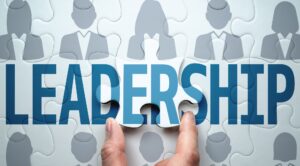To Avoid #MeToo Backlash, We Need a New Narrative for Men and Women

 Have you noticed how people at your company are responding in the wake of the #MeToo Movement? Back in January, I discussed some of the initial positive and negative outcomes of #MeToo. On the plus side, the movement has clearly elevated awareness about the pervasiveness of sexual misconduct, while empowering more women to tell their stories. But even four months ago, I’d noted some potential negative repercussions—specifically, gender polarity—that might result, unless we found a way to break out of the same old “us versus them” narrative.
Have you noticed how people at your company are responding in the wake of the #MeToo Movement? Back in January, I discussed some of the initial positive and negative outcomes of #MeToo. On the plus side, the movement has clearly elevated awareness about the pervasiveness of sexual misconduct, while empowering more women to tell their stories. But even four months ago, I’d noted some potential negative repercussions—specifically, gender polarity—that might result, unless we found a way to break out of the same old “us versus them” narrative.
Sure enough, an increasing number of #MeToo detractors, both male and female, have started to decry the movement while others simply fear that the tone of the movement may cause the whole thing to backfire, generating enough backlash that it might actually hurt women’s advancement rather than help it.
A legitimate concern here is that due to men’s heightened fear about being accused by a female colleague of harassment, some men who were women’s advocates and mentors are pulling away. Indeed, when I met with several male leaders and executives to hear their thoughts on the #MeToo Movement, 20 percent of those men felt unsure exactly what to think of it, despite expressing general agreement that some people do need to be called out for inappropriate behaviors.
While the vast majority of the men surveyed—80 percent—agreed on the importance of punishing harassment, they were genuinely concerned about the overall effects of the movement, and said it made them feel more apprehensive about supporting women in their group.
Whether or not one agrees with that specific concern, the more important point here is that the women these men were mentoring or in other ways helping with career advancement expressed that they were pulling back from this effort. Some had started to feel nervous about advocating for their high-potential women—or even giving critical feedback to them—based on what they’d seen happening to other men via #MeToo.
My biggest concern is that we are going backwards if the #MeToo Movement results in the same narrative that we’ve always had, and if that narrative creates division between men and women rather than doing the necessary work of bridging the gaps. As always, I invite women to step boldly into their power—but to be thoughtful and intentional about how they do so. While both women and men need to continue to call out unacceptable behavior, this is the perfect time to lead with an inclusive voice rather than a divisive one.
This means keeping in mind that many men hold a hidden fear and hesitation around #MeToo, so our goal as individuals and companies should be to help everyone engage in constructive and forward-moving dialogue rather than gender-based finger-pointing. To that end, we need to acknowledge men’s discomfort and then find a different way to request their help and bring them along. The key is to have these conversations together with the goal of trying to understand the unconscious biases that both men and women hold.
An example of an action step you could take is if you notice that a male colleague is not as present and forthcoming with you as he was before, initiate a meeting to sit down with him and discuss what you’ve noticed. Have the difficult conversation and explore each other’s concerns and fears—but just as important, share your common goals. In any such discussions you have, focus on this question: “How can we both be the torch for men and women to follow when it comes not just to gender equality, but to a greater sense of unity and a common voice of leadership?”
A rising tide lifts all boats and everyone benefits from it. This is our philosophy at SHAMBAUGH, where we offer a range of programs and trainings to address these issues and help companies create inclusion for driving high-performance cultures and leadership. Our three-step approach for fostering an inclusive workplace environment is based on:
- Launching inclusion. Through a dynamic forum, we call out how the old leadership paradigm is not working and the yearning for oneness at a societal and organizational level. We then help to disrupt the traditional narratives holding organizations back for achieving the truest sense of inclusion.
- Evaluation and recommendation. Herewe conduct rigorous assessments to evaluate key areas of the company regarding culture, practices, and behaviors that support or limit inclusiveness. Based on an analysis of our findings, we then create a tailored road map that builds on strengths and addresses critical gaps for moving toward inclusive work environments.
- Inclusive leadership programs. Finally, SHAMBAUGH creates dynamic offerings and results-focused learning experiences for developing inclusive leaders and managers. This helps to increase awareness and manage unproductive bias while allowing individuals to tap into the broadest range of cognitive diversity. These programs focus on key mindsets and behaviors that positively impact all employees across the organization.
Is your company ready to take the steps needed to develop inclusive leaders and advance the success of the organization by ensuring all voices are on deck and valued? It’s time to begin a new narrative so that we can all rise together to overcome our common challenges.
To learn about what you can begin to do to either start the conversation or take concrete steps for your organization to create a culture of inclusion, I would like to personally invite you to attend SHAMBAUGH’s exclusive Webcast on June 12that 10:00am ET on Best Practices for Cracking the Code for Achieving Inclusion and Equality for All!
Sign Up | June 12th at 10:00am ET
We look forward to the conversation
Rebecca Shambaugh is a leadership expert on building inclusive cultures and high performance cultures. She is the Founder of Women in Leadership and Learning, a regular contributor to Harvard Business Review, and blogger for the Huffington Post. She is author of the best-selling books It’s Not a Glass Ceiling, It’s a Sticky Floor and Make Room for Her: Why Companies Need an Integrated Leadership Model to Achieve Extraordinary Results.
We’re on a mission to develop high-performing and inclusive leaders who transform workplace cultures so everyone can thrive. Find out more about us at: www.shambaughleadership.com








